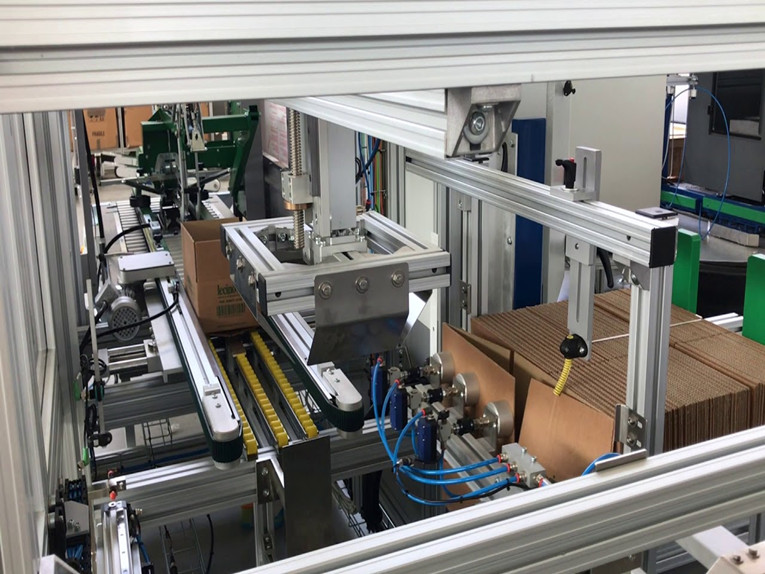
“Factory of the future” systems can enable expanded and more versatile automation solutions, allowing device manufacturers to build their process steps, process speed and process cycles around the system’s capabilities.
Medical device manufacturing processes tend to be highly regulated, requiring extensive documentation and rigorous quality control. They also need precise control, high levels of automated tracking and assembly processes that are as error-free as possible.
Some medtech manufacturers are investing in new technologies such as material transport systems that can enable new kinds of automation to improve productivity and provide greater flexibility. These new transport technologies may help medical device manufacturers evolve their operations to take advantage of the capabilities offered by the “factory of the future.”
What is it?
The factory of the future is an intelligent and agile vision for manufacturing that is rapidly being adopted across multiple industries. Also referred to as Industry 4.0 or i4.0, the factory of the future uses digitized and fully networked production systems to give plant operations and management with real-time, in-depth information to maximize the value and performance of every machine and production unit.
Software collects, transfers and processes data to provide production transparency and answers to questions about production bottlenecks, inefficient workflows and equipment in need of preventive maintenance.
Capabilities of current transport systems
Standard conveyor systems typically include twin-strand conveyors or plastic chain conveyors, which can transport loads of 10 kg or less, which satisfies the requirements for a broad range of medical device and medical kit production operations. Typical transport speeds are 10 to 12 meters per second, with diverters offloading products or components at workstations or assembly systems.
While sufficient for some operations, these conveyors can limit companies that want Industry 4.0 capabilities. Most conveyors are powered by AC motors turning at a constant speed and moving in one direction. Products transported in totes or on pallets are delivered to set points along the length of the conveyor through mechanical or pneumatic stops or diverters.
Tracking the products on the system often involves attaching RFID tags, either directly to the product or to a tote, which sometimes contains multiple items. Regulators may require medtech manufacturers to track and document how every component in every device was handled, integrated, and tested throughout production.
Throughput with these standard conveyors is determined by the conveyor’s upper limit. If new products require adding an assembly station or an automated seal insertion machine, modifying the conveyor layout can require downtime and engineering costs.
Advantages of Industry 4.0 transport systems
New, i4.0-ready material transport systems are engineered to provide more flexibility and automation. They also support much faster throughput, more efficient use of floor space and easy tracking, and can communicate that data to plant management systems for documentation and analysis.
Systems that use linear motors to boost transport speeds and add precise stop points use a revolving linear motor with vertically mounted workpiece pallets. Each pallet’s motion can be individually defined, with repeatable, individual stopping points of 0.01 mm.
The integrated measuring system allows for precise indexing of pallets, eliminating the need for additional lift-and-locate units. Stop positions can be configured in software anywhere around the system, even in curves, to increase process quality, productivity and efficiency. The system can also support transport speeds up to 150 meters per minute — significantly faster than many standard conveyors. Since each pallet is independently programmable, its position can be accurately tracked and documented. Changeovers from one product to another with changes to station stops are much faster and simpler.
Some of these systems have replaced multiple conveyors with a single linear transport system and saved nearly 40% of the plant’s floor space.
They usually support interfaces for many high-speed automation busses, such as ProfiNet, Ethernet IP and EtherCAT. These interfaces allow easier integration with a manufacturer’s existing machine communications backbone, as well as connecting to edge-computing devices such as Internet of Things (IoT) gateways that can collect and integrate data from across the factory floor.
Consider your factory transport options
This new generation of material transport systems can become the foundation for expanded and more versatile automation solutions, enabling device manufacturers to build their process steps, speed and cycles around the system’s capabilities.
One way to ensure success is to work with knowledgeable suppliers whose technology is fully aligned with factory of the future concepts. This includes understanding lean processes and principles and how to use technology within a lean operation to maximize the outcomes of continuous improvement processes.
Post time: Jul-11-2022







